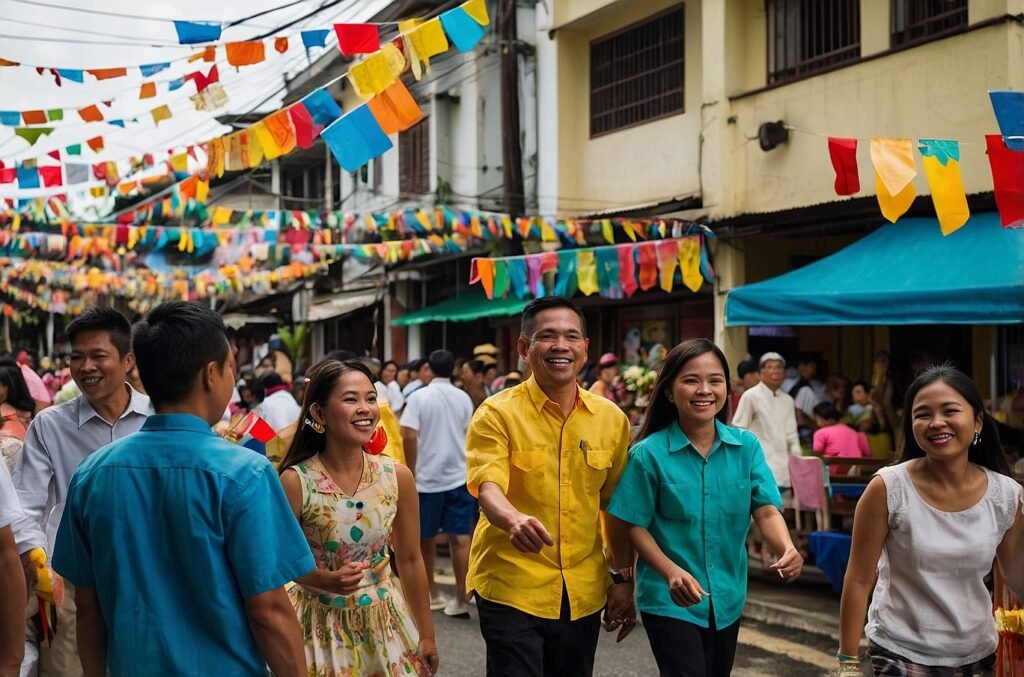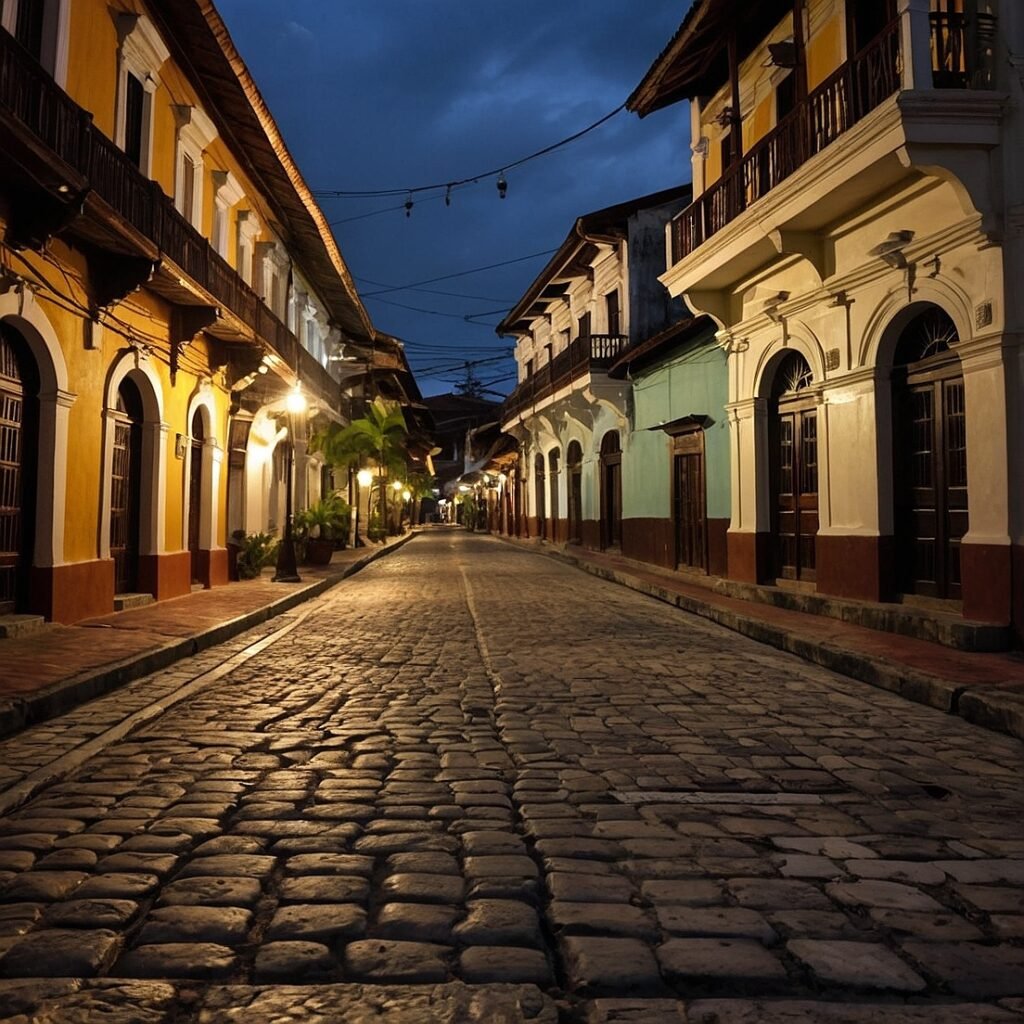The Philippines, an archipelagic nation in Southeast Asia, is renowned for its vibrant culture and warm hospitality. At the core of Filipino social life lies a cherished tradition that embodies the spirit of community and celebration: the fiesta. Fiestas are grand, colorful events that bring together entire towns, cities, and even regions to commemorate patron saints, historical milestones, or local customs. These celebrations are deeply ingrained in the fabric of Filipino society, serving as a testament to the country’s rich history, diverse cultural influences, and unwavering sense of community. In this comprehensive exploration of Filipino fiestas, we will delve into their origins, significance, and the various ways they are celebrated across the archipelago. From the elaborate preparations to the mouth-watering cuisine, from the religious rituals to the jubilant street parties, we will uncover the multifaceted nature of these beloved celebrations that continue to play a crucial role in shaping Filipino identity and fostering social cohesion.
The Historical Roots of Filipino Fiestas
Spanish Colonial Influence
The tradition of fiestas in the Philippines can be traced back to the Spanish colonial era, which lasted for more than three centuries from 1565 to 1898. During this period, the Spanish colonizers introduced Catholicism to the islands, bringing with it the practice of celebrating feast days of patron saints. These religious observances gradually evolved into the grand community celebrations we know today as fiestas. The Spanish colonial administrators and Catholic clergy encouraged the adoption of these festivities as a means of promoting religious devotion and social order among the indigenous population. Over time, the Filipino people incorporated their own pre-colonial traditions and cultural elements into these celebrations, creating a unique fusion of indigenous and Spanish Catholic practices.
Pre-colonial Roots
While the current form of Filipino fiestas is heavily influenced by Spanish Catholicism, it is important to note that the concept of communal celebrations was not entirely foreign to pre-colonial Filipino society. Before the arrival of the Spanish, indigenous communities across the archipelago had their own rituals and festivities tied to agricultural cycles, animistic beliefs, and important life events. These pre-existing traditions provided a fertile ground for the adoption and adaptation of the Spanish fiesta concept, allowing for a seamless integration of new religious practices with ancient cultural customs.
Evolution Through Time
As the Philippines underwent various periods of colonization and eventually gained independence, the nature of fiestas continued to evolve. The American colonial period (1898-1946) saw the introduction of new elements such as beauty pageants and sports competitions, which have since become integral parts of many fiesta celebrations. In the post-independence era, fiestas have taken on additional significance as expressions of national and regional identity, often incorporating themes of cultural preservation and environmental awareness alongside traditional religious observances.
The Significance of Fiestas in Filipino Society
Religious Devotion
At their core, many Filipino fiestas remain deeply rooted in religious devotion. These celebrations often center around the feast day of a town or city’s patron saint, with religious processions, masses, and novenas forming an essential part of the festivities. The religious aspect of fiestas serves to strengthen the community’s faith and provides an opportunity for spiritual renewal and thanksgiving.
Community Bonding
Fiestas play a crucial role in fostering community spirit and social cohesion. These events bring together people from all walks of life, transcending social, economic, and even political divisions. During fiestas, entire communities work together in preparation and celebration, reinforcing social bonds and promoting a sense of collective identity.
Cultural Preservation
In an era of rapid globalization, fiestas serve as important vehicles for preserving and showcasing local traditions, crafts, and artistic expressions. Many fiesta celebrations feature performances of traditional dances, music, and theatrical presentations that help keep cultural heritage alive and relevant for younger generations.
Economic Impact
Fiestas have a significant economic impact on local communities. These events often attract tourists, both domestic and international, providing a boost to local businesses such as hotels, restaurants, and souvenir shops. Additionally, fiestas create temporary employment opportunities and stimulate local industries involved in the production of festival-related goods and services.
Tourism and National Identity
On a broader scale, fiestas contribute to the Philippines’ tourism industry and play a role in shaping the country’s national identity. Many fiesta celebrations have gained international recognition, attracting visitors from around the world and serving as cultural ambassadors that showcase the best of Filipino hospitality and creativity.
Types of Fiestas Across the Philippines
Religious Fiestas
The most common type of fiesta in the Philippines is centered around the feast day of a patron saint. These religious celebrations typically include novenas, processions, and special masses, in addition to secular activities such as parades, concerts, and fairs.
Historical Commemorations
Some fiestas are held to commemorate important historical events or figures. These celebrations often have a strong educational component, featuring reenactments, exhibits, and lectures that highlight significant moments in Philippine history.
Cultural Festivals
Many fiestas focus on celebrating local culture, traditions, and products. These events often showcase indigenous arts, crafts, music, and dance, as well as regional specialties in food and agriculture.
Harvest Festivals
In agricultural regions, fiestas are sometimes tied to harvest seasons, giving thanks for bountiful crops and praying for continued abundance. These celebrations often feature displays of local produce and traditional farming techniques.
Environmental Awareness Fiestas
In recent years, some communities have begun organizing fiestas with themes related to environmental conservation and sustainability. These events aim to raise awareness about ecological issues while maintaining the festive spirit of traditional celebrations.
The Anatomy of a Filipino Fiesta
Preparation and Planning
Fiesta preparations often begin months in advance, with community leaders, church officials, and volunteers working together to plan and organize the various aspects of the celebration. Committees are formed to handle different responsibilities, such as fundraising, logistics, and programming.
Decoration and Beautification
In the weeks leading up to the fiesta, towns and cities undergo a transformation. Streets are decorated with colorful banners, lanterns, and arches. Houses are cleaned and adorned with festive ornaments, and public spaces are spruced up to welcome visitors.
Religious Observances
For religious fiestas, a novena (nine days of prayer) often precedes the main celebration. On the feast day itself, a solemn mass is typically held, followed by a procession carrying an image of the patron saint through the streets of the town or city.
Parades and Performances
Many fiestas feature grand parades showcasing colorful costumes, elaborate floats, and street dancing. Cultural performances, including traditional music and dance, are often staged in public squares or designated venues.
Food and Feasting
No Filipino fiesta is complete without an abundance of food. Households prepare special dishes to share with visitors, and communal feasts known as “salo-salo” are organized. Street food vendors and local restaurants also play a significant role in feeding the crowds.
Games and Competitions
Various games and competitions are often held during fiestas, ranging from traditional Filipino games to modern sports tournaments. These activities provide entertainment and foster a spirit of friendly competition among community members.
Fairs and Markets
Many fiestas include fairs or markets where local artisans and producers can showcase and sell their products. These events provide economic opportunities for small businesses and allow visitors to purchase unique souvenirs and local specialties.
Evening Entertainment
Fiestas often culminate in evening celebrations featuring concerts, fireworks displays, and street parties that last well into the night.
Notable Fiestas Across the Philippines
To illustrate the diversity and scale of Filipino fiestas, let’s examine some of the most famous celebrations from different regions of the country:
| Fiesta Name | Location | Date | Main Features |
|---|---|---|---|
| Sinulog Festival | Cebu City, Cebu | Third Sunday of January | Grand parade, street dancing, religious procession honoring the Santo Niño (Child Jesus) |
| Ati-Atihan Festival | Kalibo, Aklan | Third Sunday of January | Street dancing, tribal costumes, devotion to the Santo Niño |
| Panagbenga Festival | Baguio City, Benguet | February | Flower-themed parade, street dancing, flower market |
| Moriones Festival | Marinduque | Holy Week | Reenactment of the story of Longinus, elaborate masks and costumes |
| MassKara Festival | Bacolod City, Negros Occidental | October | Masked street dancing, beauty pageant, food festival |
| Kadayawan Festival | Davao City, Davao del Sur | August | Thanksgiving celebration, floral float parade, tribal competitions |
The Evolution of Fiestas in the Modern Era
Adaptation to Urban Settings
As the Philippines has undergone rapid urbanization, fiestas have adapted to the changing social landscape. In large cities, neighborhood or barangay-level celebrations have emerged, maintaining the spirit of community while accommodating the realities of urban life.
Incorporation of Technology
Modern technology has impacted the way fiestas are organized and experienced. Social media platforms are now used for promotion and coordination, while digital documentation allows for wider sharing of fiesta experiences beyond the local community.
Environmental Considerations
With growing awareness of environmental issues, many fiesta organizers are implementing eco-friendly practices. These include using biodegradable materials for decorations, promoting proper waste management, and incorporating environmental themes into the celebrations.
Commercialization and Tourism
The growing popularity of fiestas as tourist attractions has led to increased commercialization of some events. While this has brought economic benefits, it has also raised concerns about maintaining the authenticity and cultural integrity of these celebrations.
Global Filipino Communities
Filipino diaspora communities around the world have begun organizing their own fiesta celebrations, adapting traditional practices to their new home countries. These events serve as important cultural touchstones for overseas Filipinos and help introduce Filipino culture to a global audience.
The Future of Filipino Fiestas
As the Philippines continues to evolve in the 21st century, fiestas remain an integral part of the nation’s cultural landscape. However, these beloved traditions face several challenges and opportunities:
Balancing Tradition and Innovation
Fiesta organizers and participants must navigate the delicate balance between preserving traditional elements and incorporating modern innovations to keep the celebrations relevant and engaging for younger generations.
Sustainable Practices
The implementation of sustainable and eco-friendly practices in fiesta celebrations is likely to become increasingly important as environmental concerns continue to grow.
Cultural Education
Fiestas can play a crucial role in educating young Filipinos about their cultural heritage, fostering a sense of pride and identity in an increasingly globalized world.
Digital Integration
The integration of digital technologies in fiesta organization and celebration is expected to continue, potentially opening up new ways for people to participate and experience these events.
International Recognition
As Filipino culture gains more global recognition, fiestas may increasingly serve as cultural ambassadors, attracting international visitors and showcasing the best of Philippine traditions to the world.
Conclusion: The Enduring Spirit of Filipino Fiestas
Filipino fiestas are more than just colorful celebrations; they are a testament to the resilience, creativity, and communal spirit of the Filipino people. These vibrant traditions have survived centuries of colonial rule, adapted to changing social and economic conditions, and continue to play a vital role in shaping Filipino identity and fostering social cohesion. As the Philippines moves forward in the 21st century, fiestas will undoubtedly continue to evolve, incorporating new elements while preserving the core values of faith, community, and cultural pride that have made them such an essential part of Filipino life. Whether in a small rural village or a bustling urban center, the spirit of the fiesta remains a powerful force that brings people together, celebrates shared heritage, and reaffirms the bonds that make the Philippines truly unique. As long as there are Filipinos who value their traditions and cherish their sense of community, the fiesta will continue to thrive, serving as a vibrant reminder of the Philippines’ rich cultural tapestry and the enduring power of collective celebration.
Disclaimer: This article aims to provide a comprehensive overview of Filipino fiestas based on available information and research. While every effort has been made to ensure accuracy, cultural practices and celebrations may vary across different regions and communities in the Philippines. Readers are encouraged to seek additional sources for specific details about individual fiestas. If you notice any inaccuracies or have additional information to contribute, please contact us so we can update and improve this article promptly.




